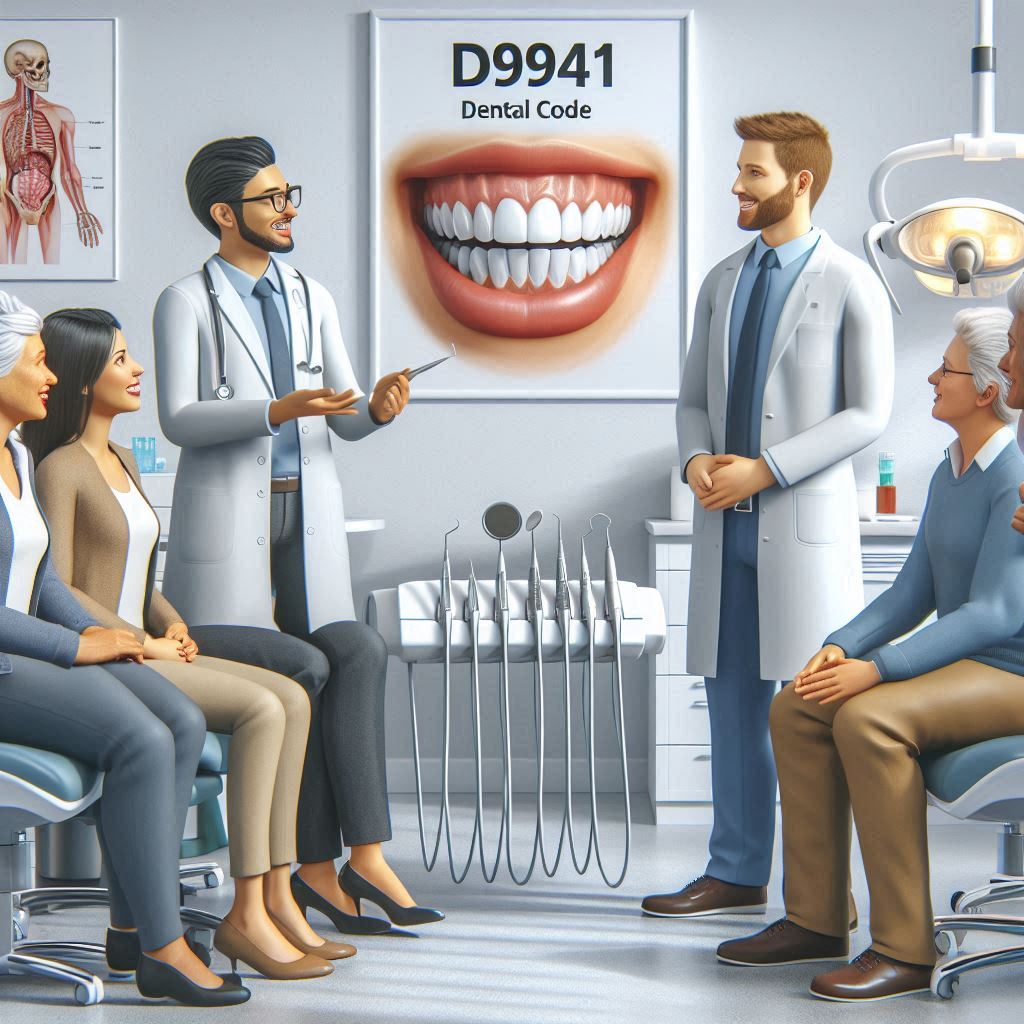D9941 Dental Code: Occlusal Guard Adjustment
Dental occlusal guards are essential for protecting teeth from grinding (bruxism), clenching, and sports-related injuries. However, even the best-fabricated guards may require adjustments over time to ensure optimal comfort and effectiveness. This is where Dental Code D9941 comes into play—a billing code specifically for the adjustment of an occlusal guard.
In this comprehensive guide, we will explore:
- What D9941 entails
- Why occlusal guard adjustments are necessary
- How dentists perform these adjustments
- Insurance considerations
- And much more
Whether you’re a dental professional or a patient seeking clarity, this article will provide in-depth insights into D9941 adjustments.

2. Understanding the D9941 Dental Code
Definition and Purpose
D9941 is a dental billing code under the American Dental Association (ADA) Current Dental Terminology (CDT). It refers to the adjustment of an occlusal guard after its initial fabrication.
- Primary Use: Fine-tuning an existing guard for better fit, comfort, and functionality.
- Not Covered Under D9941: Initial fabrication (D9940) or repairs (D9942).
When Is D9941 Used?
Adjustments may be needed due to:
✔ Changes in bite alignment
✔ Discomfort or sore spots
✔ Guard loosening over time
✔ Excessive wear affecting performance
3. Types of Occlusal Guards
| Type | Purpose | Common Users |
|---|---|---|
| Night Guards | Prevents bruxism damage | Teeth grinders (nocturnal) |
| Sports Mouthguards | Protects against impact injuries | Athletes |
| Orthotic Splints | Treats TMJ disorders | TMJ patients |
Each type may require D9941 adjustments as the patient’s dental structure evolves.
4. The Importance of Occlusal Guard Adjustment
Preventing TMJ Disorders
Ill-fitting guards can misalign the jaw, worsening TMJ pain. Proper adjustments ensure even pressure distribution.
Reducing Tooth Wear and Fractures
An unadjusted guard may cause uneven force, leading to cracked teeth or enamel erosion.
Alleviating Bruxism Symptoms
A well-adjusted guard minimizes muscle strain, reducing headaches and jaw fatigue.
5. Step-by-Step Adjustment Process (D9941 Procedure)
- Initial Assessment
- Dentist examines guard fit and bite alignment.
- Adjustment Techniques
- Trimming excess material
- Reshaping contact points
- Polishing rough edges
- Patient Feedback & Refinement
- Patient tests adjustments; further tweaks made if needed.
6. Common Issues Requiring D9941 Adjustments
- Poor Fit: Guard feels too tight or loose.
- Uneven Bite: Causes discomfort in specific teeth.
- Wear & Tear: Material degradation affects performance.
7. D9941 vs. Other Related Dental Codes
| Code | Description | When Used |
|---|---|---|
| D9940 | Occlusal guard fabrication | Initial creation |
| D9941 | Occlusal guard adjustment | Post-fabrication fine-tuning |
| D9942 | Occlusal guard repair | Fixing cracks or breaks |
8. Insurance Coverage for D9941
- Coverage Varies: Some plans cover adjustments under medical necessity.
- Out-of-Pocket Cost: Typically 50–50–150 per adjustment.
9. Patient FAQs
Q: How often should my occlusal guard be adjusted?
A: Typically every 6–12 months, or if discomfort arises.
Q: Can I adjust my guard at home?
A: No—DIY adjustments may damage the guard or worsen bite issues.
Q: Does insurance cover D9941?
A: Some plans do—check with your provider.
10. Conclusion
Dental Code D9941 ensures occlusal guards remain effective and comfortable. Regular adjustments prevent TMJ pain, tooth damage, and bruxism complications. Patients should consult their dentist if their guard feels uncomfortable or loose.


